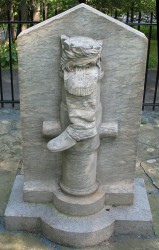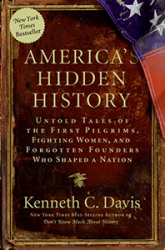(May 2022 update of a 2015 post)
Why is there a statue of Benedict Arnold’s boot?

Statue of Benedict Arnold’s Boot at Saratoga National Historical Park
There it is — part of the Saratoga National Historical Park in Saratoga, New York. The “boot” is actually anonymous, citing the “most brilliant soldier in the Continental Army.”
On October 17, 1777, the British under General Burgoyne surrendered to American rebel troops led by Horatio Gates in one of the most significant turning points of the American Revolution.
But there is no question this marker honors American history’s greatest villain.
History books like to make people into heroes or villains. And Benedict Arnold was easily characterized as a villain, the most notorious traitor in American History for his attempt to betray the patriot cause when he was in command of the strategic post at West Point, overlooking the Hudson River. But he might have been one of the nation’s greatest heroes. And that is what makes history so compelling. Not the black and white of dates and “facts,” but the more subtle gray complexities of ego, ambition and human frailty.
Born on January 14, 1741 in colonial Norwich, Connecticut, Arnold had a biography that reads like that of a character out of Dickens. The son of a wealthy, successful ship’s captain and merchant, young Benedict Arnold was born with the proverbial silver spoon in his mouth. He was sent off to the best boarding school by his father, owner of the finest home in town. Then it fell apart. Yellow fever took his sisters while he was at school. Alcoholism then took his father. The fall was stunning as the elder Arnold became the town drunk and lost his fortune. At 14, young Benedict Arnold became an indentured servant. As a teenager, he ran away on several occasions to try and join the British-American forces then fighting France in the French and Indian War. Through pluck and generous relatives, Arnold eventually became a wealthy young merchant himself and was soon immersed in patriot politics, even traveling to Philadelphia to observe the First Continental Congress.
When the fighting began in 1775, he led Connecticut’s militia to Boston to join the rebel army gathering there. Arnold soon won honors for his role in the capture of Fort Ticonderoga on Lake Champlain on May 10, 1775. Cannons from Fort Ticonderoga were later taken to Boston by Henry Knox.
After Arnold’s treason, he was pretty much erased from this narrative and Ethan Allen worked hard to make sure he received complete credit. (Allen spent three years later as a British prisoner and even negotiated with the British for an independent Vermont. He later wrote a deist book attacking Christianity.)
With George Washington’s approval, Arnold went on to lead a daring but disastrous march through Maine to unsuccessfully attack Quebec.He was accompanied on that venture by a young Aaron Burr. History is constantly surprising and remarkable and often more intriguing than fiction.
Later, Arnold built a small navy to battle the British on Lake Champlain, helping save the patriot cause. But it was at Saratoga in October 1777 that he made his greatest contribution, leading a charge that turned the tide in what would become the most important American victory of the Revolution to that point.
During that charge, he was wounded in the leg and the injury caused a limp that would last his life. The statue recognizes Arnold’s wound and his central role in the victory at Saratoga without naming him.
Admired by Washington, Arnold also made a great many enemies. Seeing others promoted and advanced before him made him bitter and ultimately led to his fateful decision to join the British side.
After his plot was uncovered, Arnold did join the British side, fighting against his onetime countrymen. He led an assault on Virginia that nearly captured Governor Thomas Jefferson in 1781.
Arnold later moved to Canada and eventually to London where he died and was buried in June 1801 at the age of 60. His remains were accidentally –and fittingly?– moved to an unmarked grave.
You can read more about Arnold and his exploits in the chapter called “Arnold’s Boot” in America’s Hidden History and about the last day’s of the Revolution and Arnold’s role in The Hidden History of America at War.

America’s Hidden History, includes tales of “Forgotten Founders”

The Hidden History of America At War (paperback)